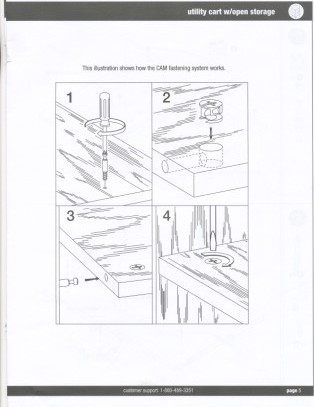Use Your Words
Although Pictorial Instructions Avoid Localization Issues, Some of Us Don’t Respond Well to Diagrams
People comprehend information in different ways, be it verbal, visual, or a combo of both. When you prepare information to communicate to customers, make sure you take into account how different people want to assimilate the information and that it is easy for all to understand.
NETTING IT OUT
People learn and comprehend things in different ways. It's important to be sure that the information you are communicating to customers is getting through to them in the ways that are easiest for them to understand. Here are some simple things to keep in mind as you create communications to share with customers.
- What is the purpose of the information are you communicating?
- How complex is the information?
- What language and or skill set does the customer base need in order to understand what you are telling them?
- Have you tested out how understandable your communications are for different types of people?
BUILDING A CART
A few days ago, I bought a new utility cart (not assembled) from Staples to house my new laptop and printer. Reading through the instruction manual that came with the product, I found the following caution: "Always have two people assemble this unit." So I invited a friend over to help me put it together (thanks, Brian). I was actually delighted to see that caution because I was very concerned about my ability to build the cart because the instructions included almost no text—it was 90 percent diagrams. And I know that I have a hard time correctly reading construction diagrams.
So, on Saturday, Brian looked over the pieces of the cart, the documentation, and told me to make myself comfortable in the other room (actual comment, "Stop hovering!") and that he would call me if he needed me.
Not more than five minutes later, I heard him mutter (loudly), "Where are the words?" He actually said this about four times during the building process.
Like me, Brian isn't a natural diagram reader. He just wanted a verbal description of what he was supposed to do. It took him over an hour to assemble the cart—something he claimed he would have been able to do in about 20 minutes had he written instructions.
I told Patty Seybold about my experience the next day, and she completely identified. She and her husband had spent five hours putting together (and taking apart and re-putting together) bunk beds because the instructions were all in diagrams. She, too, wanted the words!
I was reminded of all the times I've told crying children to "Use your word." Brian and I shared a giggle over that, and then watched TV for a while.
PEOPLE LEARN DIFFERENTLY
Okay, this was a cute story. But it has some serious implications for organizations that provide instructions to customers for products both simple (a cart) and complex (installing a new network infrastructure). Not everyone learns and comprehends things in the same way.
Utility Cart Instructions

© 2010 Staples
Illustration 1. Here is a page out of the instruction manual for the Utility Cart with Open Storage. The diagram may SHOW how the CAM fastening system works, but it doesn't TELL me how it works.
Verbal versus Visual Comprehension
Think about GPS systems or Mapquest.com. Both offer graphical interfaces (the maps) as well as verbal directions: Michelle on my GPS tells me to "take exit left," and Mapquest tells me, in writing, to take exit 32 on the left after 3 miles. I am one of the people who rarely looks at the map; I always prefer the verbal instructions. Yet my friend Steve ALWAYS uses the map, turning off the GPS voice ("annoying and smug") and printing out only the map section from Mapquest. We take in input differently, and, with something as immediate as following directions while driving, we need to understand what to do very quickly...
Sign in to download the full article
0 comments
Be the first one to comment.



